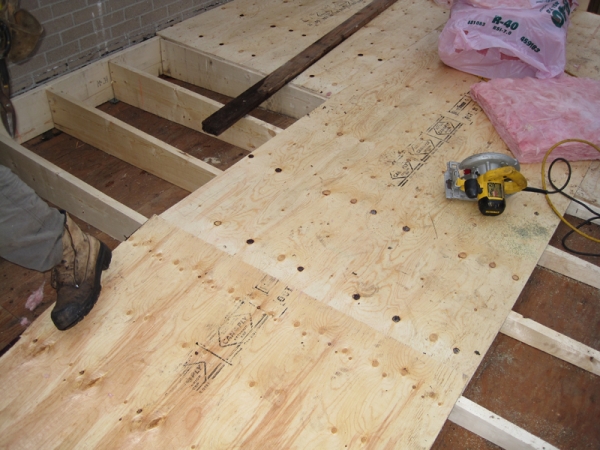Contributing to the leakage was the lack of slope to drain the water towards the eavestrough. To solve this problem we built a slope by installing new rafters lined up with existing rafters below the existing deck and installed new plywood over the new rafters. Essentially building a new sloped deck over the existing deck. We then proceeded to install our usual two ply modified bitumen flat roofing system with 1.5 inch poly-iso insulation. It was mid January and the sunlight hours were extremely short but our team hustled and we pulled off the entire carpentry and first base ply before dark. Our client was extremely pleased given more snow was in the forecast.
Proper drainage contributes to a longer roof life since water and snow are draining from the roof. The higher the slope the better the drainage. By building the slope with wood as above we were able to build a slope that recedes from 10 inches to zero. It is also possible to build a slope using poly-iso insulation as we often do however, the slope can recede from a maximum 3 inches to zero because 3 inch poly-iso insulation is the thickest standard available. It is more costly to build a slope from wood than poly-iso insulation but for a small roof the benefits may out weighs the costs. Given our clients experience with the water damage he decided to go ahead with rebuilding the slope from wood.






